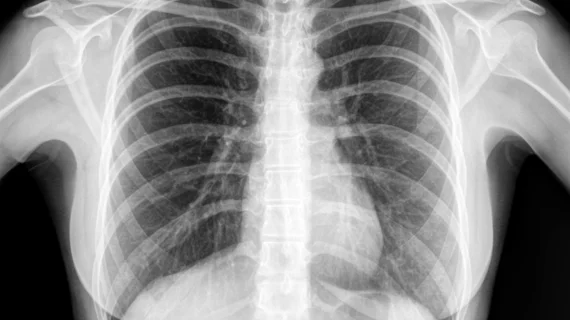SIIM19: Neural network helps ID tuberculosis on chest x-rays
A convolutional neural network (CNN) approach can accurately identify and sub-classify suspected tuberculosis (TB) on chest radiographs, according to research presented at the Society for Imaging Informatics in Medicine (SIIM) annual meeting.
While screening methods and treatment for tuberculosis have improved, it remains a leading cause of death across the globe, Jack W. Luo, MD, of McGill University in Montreal said at the conference. And in his home country, Aboriginal Canadian communities, while only 4% of the population, make up 23% of active TB cases.
“The limited financial, infrastructure and human resources available to interpret radiographs causes a key barrier to the timely diagnosis and isolation of active TB,” Luo said during the presentation. “As such, we believe that the integration of artificial intelligence in the diagnostic process can reduce the burden of interpretation and improve screening efficacy.”
Luo and his colleagues extracted 175 radiographs with TB and 8,933 controls from their PACS system. The exams, performed between 2006 and 2017, were queried using a key phrase approach to identify images with “radiographically suspicious” TB. Positive cases were manually annotated for opacity, cavitary or military regions of interest—the three main pulmonary presentations of TB. A total of 156 were positive for infiltrate, 89 for cavitary, and 19 for miliary.
They sought to compare the RetinaNet model trained solely on in-house data, to a model pre-trained on 2,500 additional images from the RSNA Pneumonia Detection Challenge. To measure their effectiveness, Luo et al. used mean average precision (mAP) for localization and AUC for classification.
Overall, the RetinaNet CNN trained on RSNA data achieved an AUC of 0.897 for classifying TB. Moreover, “pretraining the model on the RSNA dataset performed quite a bit better” than the RetinaNet alone.
For infiltrate cases, the CNN scored a mAP of 0.384 with pre-training and 0.305 without. In cavitary cases, the pre-trained CNN mAP was 0.253 compared to 0.169 without. And in miliary cases, the network achieved a mAP of 0.346 with pre-training, and 0.335 without.
According to Luo, he believes the pre-trained model could eventually help reduce time it takes to interpret TB, especially in resource-strapped regions.
The pre-trained model scored a mAP of 0.320 in the training set. In comparison, Luo noted, the top score in the RSNA Pneumonia Challenge was 0.246. He did state however, that these results were hard to compare due to differences in datasets and variances in annotating used between the two tasks.
Luo also mentioned the study was limited by the small number of positive TB cases, and that his team is looking for ways to extend their dataset, including looking for sources with a higher number of potential TB.

